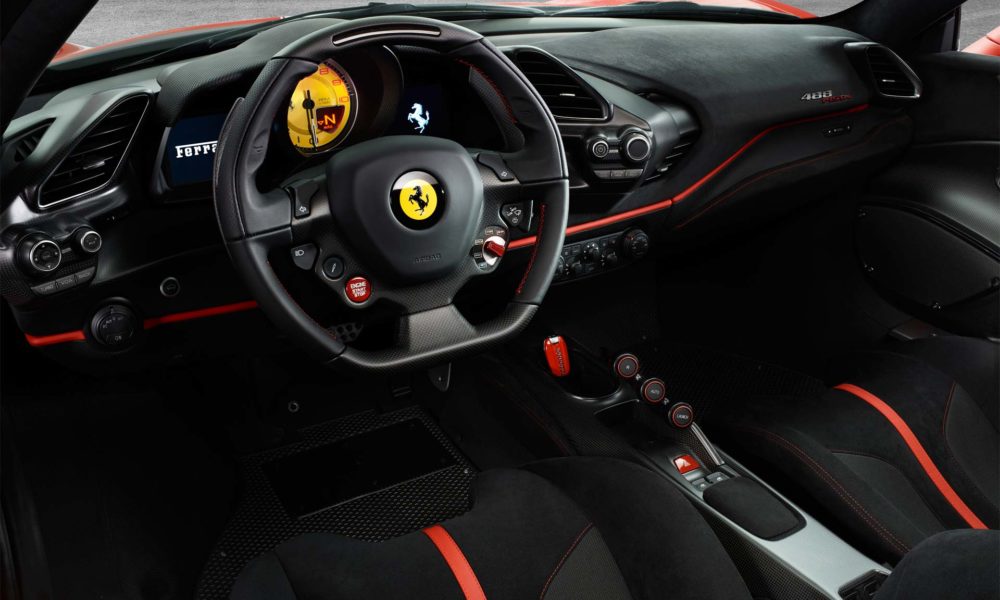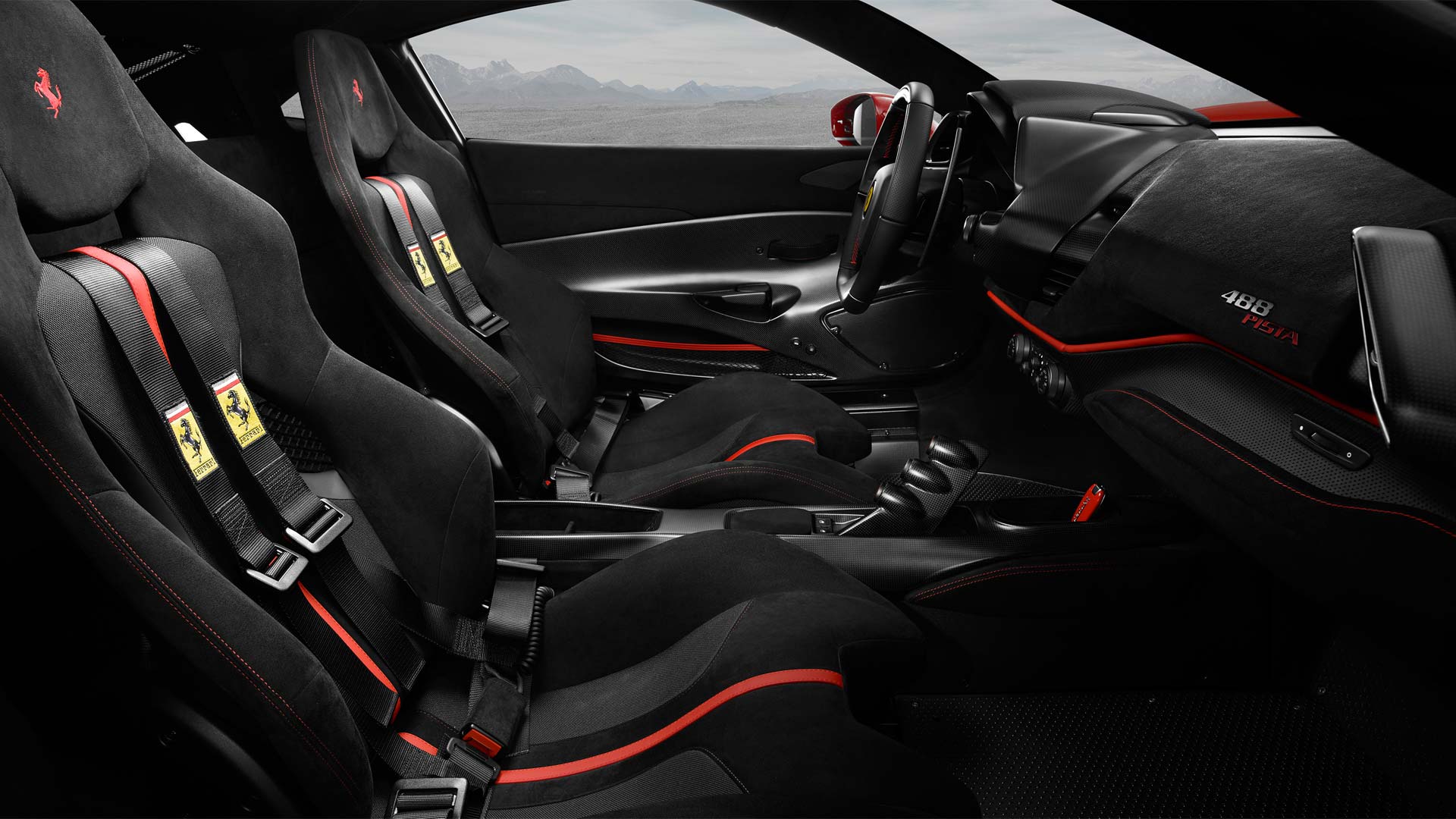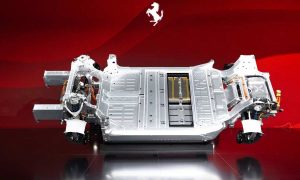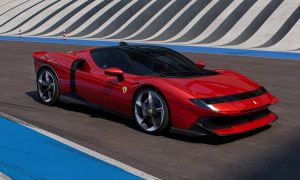Ferrari has officially revealed the 488 Pista ahead of its debut at the upcoming Geneva Motor Show. The Pista in Italian literally translates to “Track”. The 488 Pista succeeds Ferrari’s V8-engined special series – the 360 Challenge Stradale, 430 Scuderia and 458 Speciale.
The new model weighs 90 kg less (1,280 kg dry) than the 488 GTB, while the power output is up by 50 hp. Engine cover, front and rear bumpers and the rear spoiler in Carbon fibre, and Lexan for the rear window contribute to the weight loss.
With 98 Octane petrol, the 3.9L (3,902 cc) V8 twin turbo delivers 530 kW (720 hp) @ 8,000 rpm and 770 Nm of torque @ 3,000 rpm. The Pista can sprint from 0-100 km/h in 2.85 seconds, and onto a top speed of 340 km/h.
Ferrari said that the engine sound quality and the intensity are higher than the 488 GTB in all gears and at all engine speeds in proportion with the progressive increase in power.
The Pista borrows aerodynamics from Ferrari’s motor-sports experience. These include F1-inspired S-Duct and the design of the front diffusers which feature a ramp angle, and a longer and higher rear spoiler. The final result is a 20% increase in downforce compared to the 488 GTB.
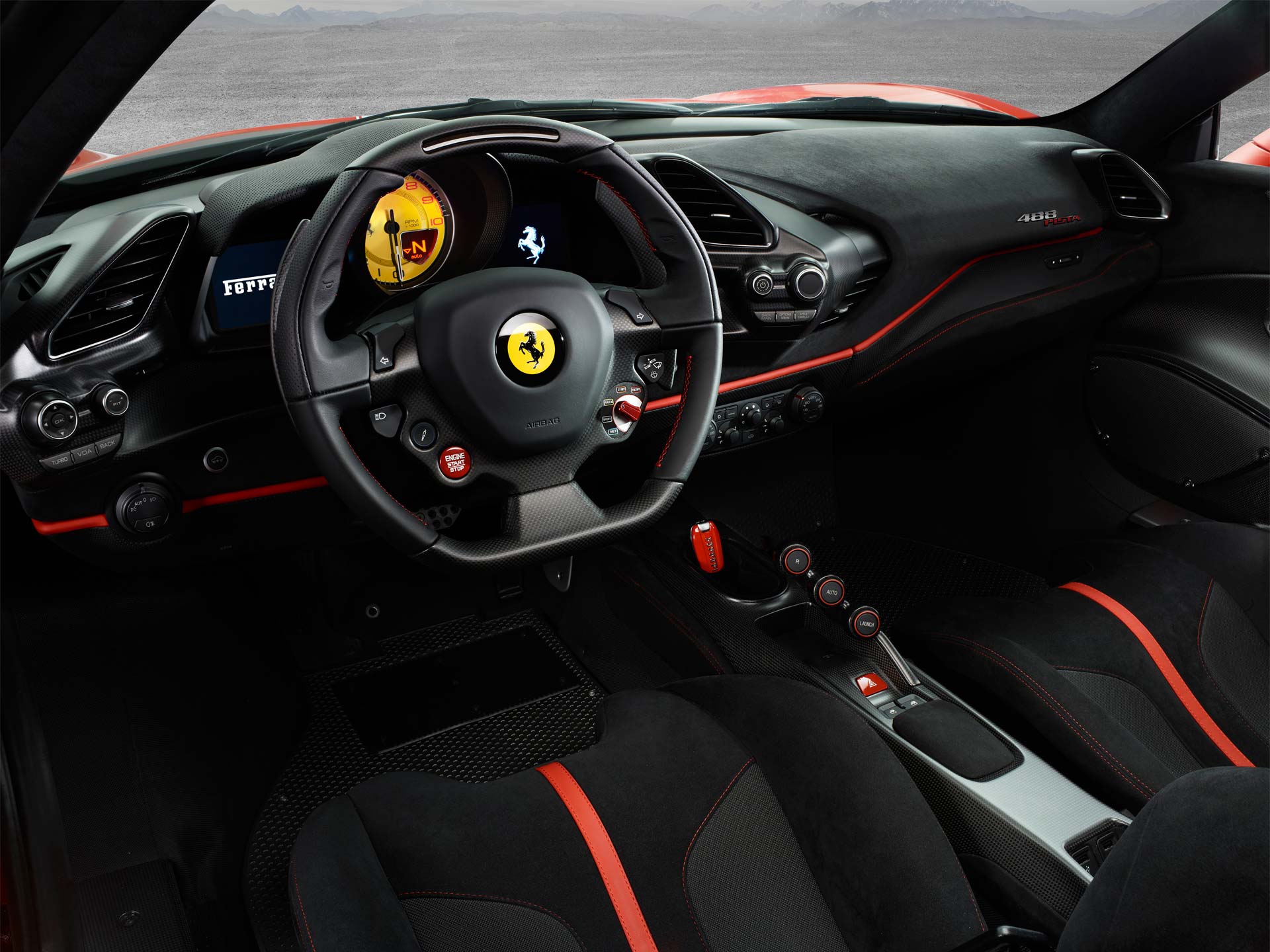
The car also features version 6 of the Side-Slip Angle Control system for more driving pleasure. SSC 6.0 incorporates the following systems: E-Diff3, F1-Trac, magnetorheological suspension (SCM) and for the first time ever, the Ferrari Dynamic Enhancer – a lateral dynamics control system. It is available when the manettino is in the CT-OFF position. The FDE software can also adjust the brake pressure at the calipers, which is claimed to be world’s first. The control system intervenes in advance, lightly actuating the calipers through, and exiting corners.

This is also the first time that an optional 20-inch single-piece carbon-fibre wheels have been made available for a Ferrari. Apparently, they’re around 20% lighter than the forged wheel rims that come as standard on this car and features a special coating from the aerospace industry, which efficiently reflects and dissipates heat generated under braking.

Leave a Reply
Note: Comments that are unrelated to the post above get automatically filtered into the trash bin.







